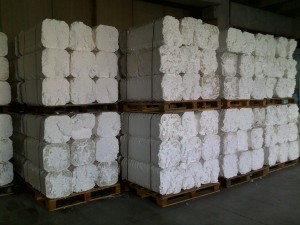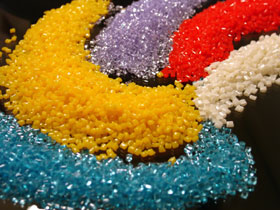More than 2.5 million tons of polystyrene are dumped into landfills each year in US. Less than one percent is recycled. The difficulty with EPS recycling is that it’s expensive to transport. Ironically, the very qualities that make EPS such a great packing material—it’s light and bulky—make it wildly inefficient to ship. For easier transportation, polystyrene is usually processed before shipment. At present, there are three ways to process it, all of which need a peculiar piece of equipment.
Cold-Compressing
A foam densifier is needed for cold-compressing of polystyrene. All kinds of EPS boxes are dumped into the densifier from its hopper. Then the blades crush the polystyrene into small pieces, which are falling down on the screw. The screw pushes the polystyrene pieces to the molding chute, in which polystyrene is compressed by a hydraulic system into blocks.
Hot-Melting
Hot-melting needs a foam densifer as well. What is different is that the final procedure involves heat rather than a hydraulic system. As the same as the procedures before cold-compressing, after being broken down into small pieces, polystyrene is melted by heat.
Pelletizing
Waste polystyrene can also be pelletized as small resins. Pelletizing process usually follows the cold-compressing or hot-melting, the blocks from which are shredded so that they fit into an auger—a long, heated tube with a giant corkscrew in it. Dumping the shreds into one end and turning the screw moves the material along the heated tube and melts it. The liquid is then pushed through a plate with a bunch of holes, like a garlic press, and cooled with water. The result is small pellets of pure polystyrene called resin pellets.